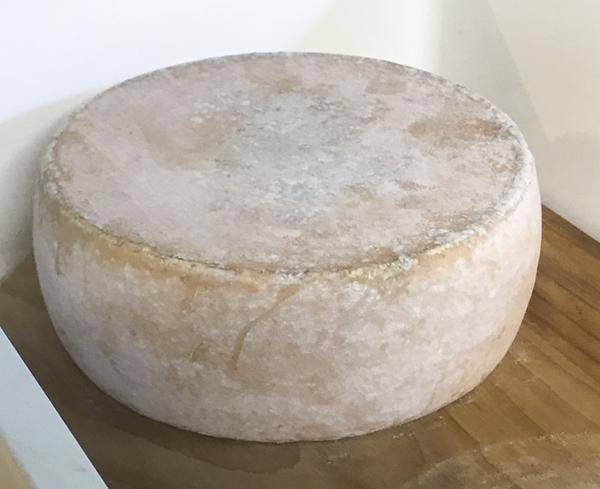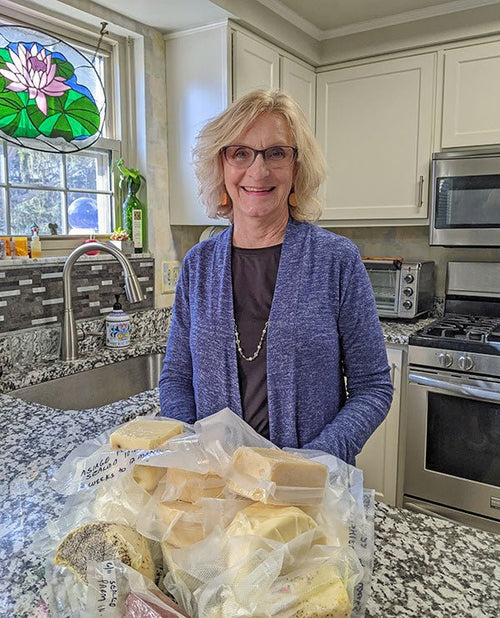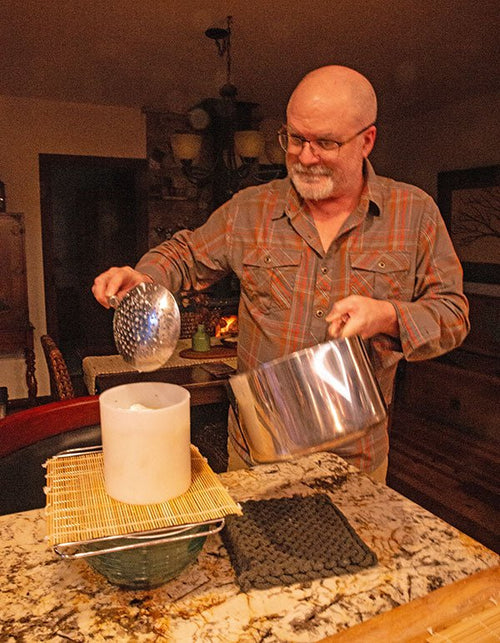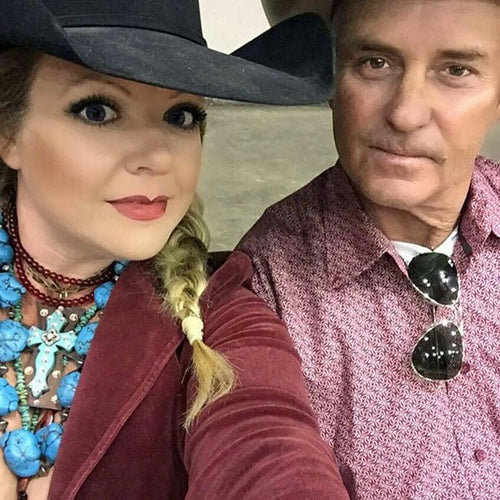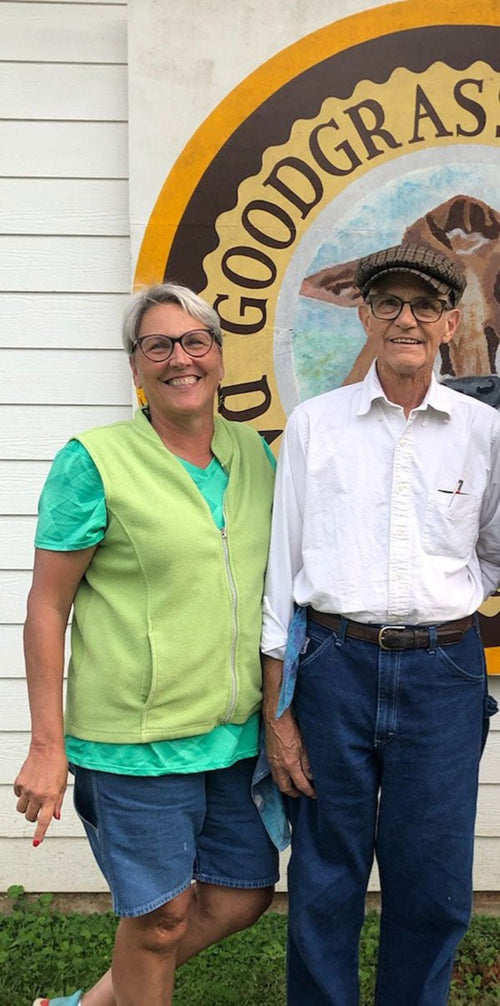Cheese Making Recipe of the Month
Tete de Moine Cheese Making Recipe
Tete de Moine is a washed rind Alpine style cheese which is traditionally served as thinly shaved florets for a beautiful presentation. This recipe is a great guideline for intermediate or advanced cheese makers to learn about making a washed rind style cheese.
Cheese Making Questions & Answers
Will the Cheese grow a new rind?
Q. If a Stilton blue cheese has developed a rind and that rind is cut off, do you think the cheese will grow a new one after a few weeks?
A. A new rind may develop but probably not like the original, which took advantage of the early high moisture and yeast on the surface.
Any brushing or rubbing needed?
Q. I'm making some Saint Nectaire and I am wondering what the care is during affinage after the 3 weekly washes with brine. Does it need to be turned daily between washes, or after completing the series? Any brushing or rubbing needed?
A. By this time, the natural mold growth should be protecting the surface. You can pat it down if you like. It is a thin surface in the end and it's byproducts tend to help ripen the cheese. Keep turning it every few days.
I am beginning to see spots of black mold.
Q. I am making Swiss and Emmental cheese from the recipe in your book, Home Cheesemaking, on pages 122 and 125. We are using raw unpasteurized Jersey milk we get from our Jersey cows. The cheeses are, at this point, aging in a walk-in cooler that varies between 45-50F and 85%-93% humidity.
At around the two week mark, I am beginning to see spots of black mold. Do I scrape these off/out, to the point of actually taking cheese particulate off as well or do I just wipe the cheese off with a water/vinegar solution and hope the mold dies?
A. Best not to break through the integrity of the surface. That just opens it up to more difficult maintenance. The best way to handle a natural rind that has no protection, is to constantly brush or wipe it away. This can be a matter of dry brushing or even brushing with a light brine.
This needs to be attended to early in the aging and from then on, regularly scheduled until the surface dries down a bit. A light coat of olive or mineral oil added after 3-4 weeks will make this easier.
Many of the molds leave a dark stain if let go. Don’t worry about this on the ones you have aging. It’s not harmful.
It smells like yogurt and it has great consistency, but why would the whey be on the bottom?
Q. Re: Yogurt. Typically, we save some from each batch to use in a new batch, and it works just fine for about five repeats. Yesterday, we started with a new culture pack from the freezer but I think my wife did not let the milk cool sufficiently before adding the culture and, in the morning, we had slightly thickened milk.
I put this mixture back in the pot and re-heated to about 112F and added a new pack of culture. We put the jars in our warming box, as usual. When we investigated, we found that there had been a separation of the whey on the bottom of the jar and a thick “yogurt” above this liquid whey?
Very strange in that we have never experienced whey being separated out in our yogurt making previously. It smells like yogurt and it has great consistency, but why would the whey be on the bottom?
A. It would probably have been best to have continued with the slightly thickened milk and just let it set a bit longer. Sometimes a different milk just needs more time. All of the transferring it to the jars, stirring and then pouring it back into the pot for reheating would have disturbed any of the structure that had been previously developed.
Adding more culture likely increased the acid to the point where whey was being separated. Combined with the structural interference, the curd could no longer hold the moisture and everything separated.
Whey is always released when the acid development goes too far. You can also expect to see a more granular curd when this happens.
Can the molds typically found on an aging cheddar cause illness in a generally healthy individual?
Q. I am planning to make cheddar and the question I want to tackle revolves around traditional bandaging. I understand the benefit of natural mold on the aging cheddar. But, I use a wine cooler with an external humidifier in my basement. Should I be worried about mold inside my home? Can the molds typically found on an aging cheddar cause illness in a generally healthy individual? Are they themselves edible?
A. Regarding the health safety of molds, that should not be an issue unless there is an existing respiratory condition. However, you may need to take it outdoors to brush the mold down once it has aged. The mold blooms for 4-5 months until the cheese begins to dry down. Then, it flakes off, leaving just the bandage.
Have a cheese making question, we're here for you: info@cheesemaking.com
Meet a Fellow Cheese Maker
Wendy Gardner in Whitehall, Montana
Wendy Gardner is raising Alpine goats and making all kinds of cheese at an altitude of 6000 feet - way up in the mountains of "big sky country."
The scenery is absolutely spectacular and it looks like she's "livin the dream," but, the wildlife around her is a real threat to her goats. In fact, it's a constant battle.
Wendy makes cheese twice/week, but, in Montana it's not legal for her to sell it. Despite that, she shows many of the different kinds she makes on her website - Garden Dairy Alpine Goats. She wants people to know that you can make any kind of cheese with goat's milk. There's no doubt that seeing her pictures is an inspiration!
News From Fellow Cheese Makers
Weekend Fun!
I’ve been a customer for at least 20 years ever since my children raised goats for 4H.
In more recent years, I’ve been a part of a great group of women farmers in our area of south central Wisconsin called Soil Sisters
We hold a weekend of farm tours and classes in early August. This year I held a home cheese making class and included your mozzarella kits in the class for my participants. Thanks for teaching me to make wonderful cheese for my family and now to share that joy with others.
The picture is from the Soil Sisters Wisconsin Annual Celebration of Farms and Rural Life - www.soilsisterswi.org with my home cheese making class. I had 18 participants from all around the country. It was pretty cool! The women in this photo had come all the way from Arkansas to Wisconsin and cheese making was at the top of their list for learning.
Dela Ends, Green County, Wisconsin
PS Your new Say Cheese! book is awesome!
Please send your cheese making news & photos to: moosletter@cheesemaking.com
Cheese Making 1,2 & 3
Learn all about the ingredients, equipment and process for making cheese at home. This beginner's guide will walk you through the process from start to finish.
Beginner FAQ's
Got a question? We've got an answer. From milk and cream to rennet and aging, our FAQ section is filled with answers to all your home cheese making questions.






























